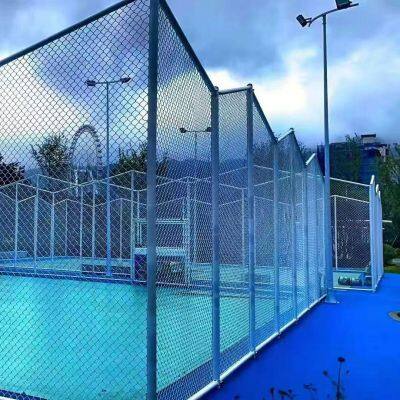-
 Liu
Hi there! Welcome to my shop. Let me know if you have any questions.
Liu
Hi there! Welcome to my shop. Let me know if you have any questions.
Your message has exceeded the limit.

Different Kinds of Fences: Exploring Various Fence Types and Styles
2025-10-05 22:06:00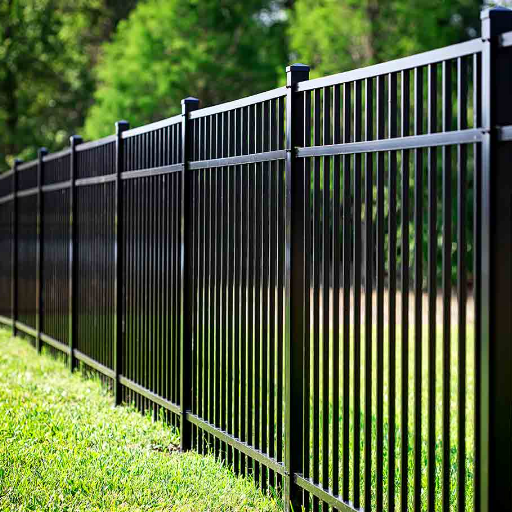
Fences are more than just boundaries for your property. They are the main ingredients of design, safety, privacy, and function. Maybe you want to add more curb appeal, protect your loved ones, keep your children safe, or just develop your space. A style and material fit for every purpose is available! From traditional wood-panel fences to contemporary-metal designs, and from heavy-duty vinyl varieties to cute quaint picket fences, the combinations are just endless. This blog post ventures into the diverse world of fences, all different in types, styles, and benefits. We will walk you through the most vital considerations involved in picking a fence so that you can better decide what best suits your home or property. Find more info now
Wood Fences
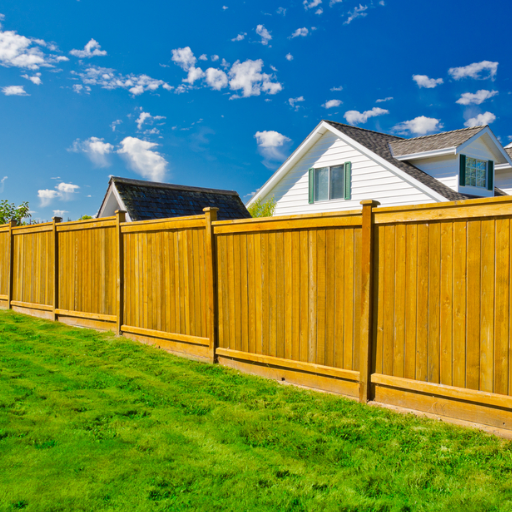
Wood fences-the concept itself has aged and is still flexible for homeowners. They are admired for their natural appeal, which goes well with almost all styles of architecture. Wood fences are just about the best in giving anyone some latitude in height, style, or color. They are even cheaper compared with other materials, which is all the more reason they are in much favor among property owners. However, one needs to keep them painted or stained from weathering, really-just for the wood to last longer. They indeed remain a solution for anyone wanting a charismatic wood fence for adorning and shielding his property.
Types of Wood Fences
Different types of wood fences are commonly placed for specific purposes and to fit with aesthetic preferences. Picket fences have always been a popular choice and carry much traditional charm; they are usually lower in height and well-suited to front yards. In contrast, "privacy fences" are tall and are meant to block the sight of anything in a backyard, giving an aura of seclusion and sometimes security to the rear. Split rail fencing is rustic and is often a good way to delineate property boundaries in open or rural settings. Lattice fencing is somewhat decorative and can be used as a trellis for climbing plants, lending a very garden-like feeling. With that said, the various wood fences can be customized further according to type of wood, height, and finish to suit particular needs and/or design preferences.
Advantages of Wood Privacy Fences
Wood privacy fences come with plenty of advantages and are thus a popular option among homeowners. The best security and seclusion they offer allow for outdoor space to be a safe and private realm. The natural wood look adds charm to a property; in addition, they offer never go out of fashion designs customizable to any architectural style. Wood fences can be customized for height, stain, and finish according to personal preference or functional use; if properly maintained, this type of fencing is durable enough to provide a long-term solution to border definition while building up the home's value.
Common Wood Types Used in Fencing
As it has natural resistance to decay and insects, it preserves its beauty and aroma when used in a fence build; cedar, therefore, has always been a preferred choice. Pine is the other inexpensive and commonly used wood, often pressure-treated to increase its durability and resistance against rot. Redwood is selected for long color and performance, although it is often costly. Cypress is considered as an alternative with strength and pest-resistance, while spruce is often selected for picket fences as it is inexpensive and easy to get. In their ways, each wood offers a particular quality; hence, a homeowner can choose accordingly depending on budget, taste, and maintenance overhead.
Chain Link Fences
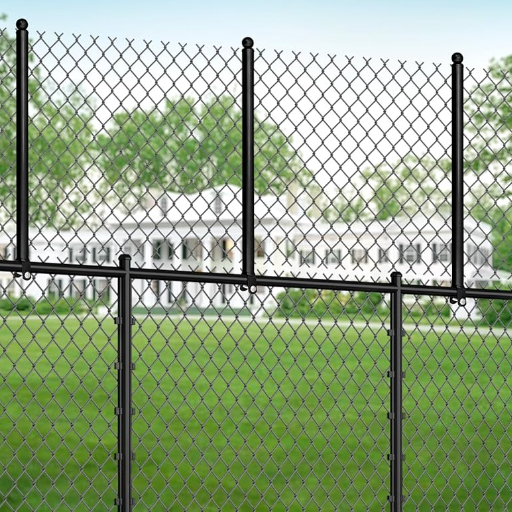
Chain link fences are safe and inexpensive property enclosures. They are sturdy and require little maintenance. Chain link fences are made from interwoven steel wires coated with some protective material to avoid rust and corrosion. These fences act as boundary markers or are meant to enclose yards and provide safety without obstructing one's view. They are easy to install, and variations in height and gauge offer selection against interlink change. Versatile in application, chain link fences are popular for residential and commercial applications.
Features of Chain Link Fences
The chain link fence presents several distinct features that make it excel in several applications:
Durability and Longevity
In general, chain-link fences are made of galvanized steel, which may be coated with zinc or vinyl to provide extra resistance against environmental blows like moisture, UV rays, and temperature fluctuations. Hence, the chain-link fence remains for probably the entire length of time, even when subjected to adverse weather extremes.
Cheap
Compared to other fencing materials like wood or wrought iron, chain link fences are cost-effective, both in the purchase itself and in maintenance costs. Lesser maintenance equals a purview to keep yourself economically faster on the maintenance expenses involved.
Personalization
Available in different heights, mesh sizes, and gauges, chain link fences can be made-to-measure for a given purpose. These may be low-security aesthetics for a residential backyard, or high-security for a school perimeter, or completely utilitarian and industrially aesthetic.
Does Not Restrict View
Unlike solid fences, chain link fences allow one to see right through them while marking out boundaries. This advantage is beneficial in places such as sports fields, playgrounds, or anywhere else requiring sightlines.
Ease of Installation
Chain link fences are designed to install very quickly with rolls of chain link available prefabricated and general fastener systems that permit efficient attaching of the very framework from the field. Labor hours are reduced, which in turn lowers installation costs.
Low Maintenance
The chain link fences are aided by corrosion-resisting coatings, which ensure minimal maintenance-frequent cleaning or checks seem more than enough to guarantee structural integrity. This becomes interesting in environments where regular upkeep may prove cumbersome, i.e., industrial zones.
Environmental Resilience
When deliberately installed, modern chain link fences can hold their ground under high winds and physical stress. Additional reinforcement may be added to provide an extra security level, making the fences perfect for areas prone to natural calamities, such as hurricanes.
These features explain the rationale as to why chain link fences remain one of the most popular types of fences ever made, fulfilling functionality and cost-efficiency with flexibility in residential and commercial settings.
Benefits of Using Chain Link
Chain link fences offer infinite benefits and thus make a versatile option assigned for any need. Being galvanized or coated steel in construction, the fences resist, corrosion and rust. The low cost of chain link fencing comes up as another benefit, permitting cheaper fencing for extensive areas. While they secure a spot, their see-through nature makes them an obstacle to vision; hence, it's an application that can be used for residential as well as commercial purposes. They are also least maintenance, easy to construct, adaptable to different heights and designs, making them a prime choice to secure properties while maintaining an open-air working aesthetic.
Chain Link Fence Installation Process
Chain link fence installation involves easy steps that any person can follow. Firstly, measure and mark the area where the fence will sit; fence post placement must be exact. Afterward, one should dig holes for the fence posts, putting them into concrete while ensuring alignment and level. Once the posts are set, the top rail is attached to serve as a stable frame. The chain link fabric is then unrolled and attached to one end post with tension bands and a tension bar. After this, the fabric is stretched tightly over the frame and secured to the remaining posts with tie wires or more bands. Lastly, trim away any excess material and place caps on the posts for an enhanced look. It is paramount to have proper tools and measurements to ensure the fence remains safe and strong in the landscape.
Vinyl Fences
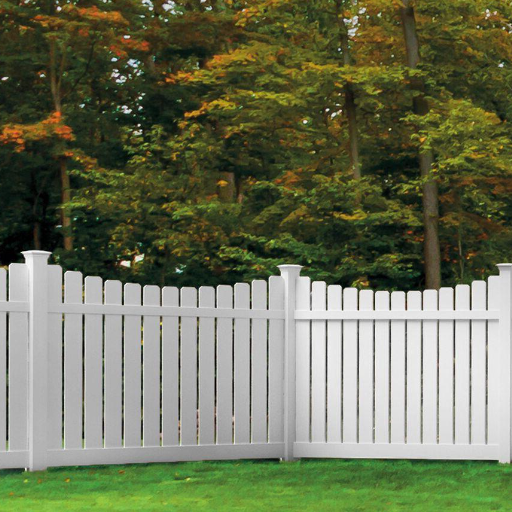
Durable and low upkeep are two words one could use to describe Vinyl Fences that secure and beautify your property. Close to weather-proof, pest-proof, and decay-proof, they may be an importunate choice as against wood or metal. Vinyl fences come in many styles, heights, and colors suitable for creative design adaptations depending on your needs. Installation involves setting the posts on the ground, attaching the pre-formed panels, and then alignment. Periodic cleaning with soap and water reveals them, but that's all: no paint, no stain. With such life span, design variety, and little maintenance need, this practical choice fits in quite nicely with many homeowners.
Since the Vinyl Fencing offers some advantages
There are several advantages that vinyl fencing has to offer and have helped make it a popular choice amongst homeowners. Foremost in the list is durability, meaning it must be maintained to make sure it performs well over a longer period. Vinyl fences resist rot, rust, and warping, staying intact through harsh weather. Vinyl fences also require very low maintenance; washing them with a mild detergent is enough to maintain their look, so there is no need for painting or staining. It offers a lot of variety, being available in different colors, heights, and designs to suit any home style. Also, vinyl fencing is very simple to install, comprising pre-formed panels that make the installation straightforward and less labor-intensive. Marketing such features as efficiency, aesthetics, and affordability works to the advantage of consumers on the lookout for good fencing.
Types of Vinyl Fences Available
Vinyl fences come in all styles to meet varied needs and preferences. Tall panels are common in privacy fences, blocking view lines and muffling sounds for those seeking some seclusion. Picket fences, for instance, present an upscale yet simple look with slats spaced apart evenly to boost curb appeal. Ranch-style or post-and-rail fence options serve well for larger properties and lend a rustic touch to the atmosphere, while semi-private fences stand somewhere between full privacy and full breathing space, thanks to slats spaced a little. With myriad colors, designs, and variations to choose from, vinyl fences suit almost all considerations of utility and aesthetics.
Maintenance Tips for Vinyl Fences
Being durable and requiring hardly any maintenance, vinyl fences are easy and cost-effective to maintain. Washing with an unspecified mild detergent and water normally clears off dirt, mildew, or any staining, thereby keeping the fence looking fresh. For more stubborn stains, gentle brushing or cleaning should be applied by using a non-abrasive cleaner. These are easy fixes for any problems that may develop with a fence, such as loose posts, minor damages, or dents, so as to maintain structural integrity. Avoid putting pressure on the fence by leaning any heavy objects against it. Periodic rinsing will keep any environmental buildup at bay so that the fence remains good-looking for years to come.
Iron Fences

Iron fences are durable with a beautiful appearance. Maintain an iron fence by regularly inspecting indications of rust or corrosion and cleaning off the accumulation with sandpaper or a wire brush. A coat of good rust-resistant paint or sealant will keep any further damage at bay and prolong the life of the fence. Occasionally, clean the fence with soapy water and a soft cloth to remove dirt and debris. Make sure to fix any loose or damaged part on time for the sake of structural integrity and appearance.
Wrought Iron vs. Aluminum Fences
Two sets of benefits can be gained from wrought iron and aluminum fences, depending on your desires. Wrought iron is very durable, having a classical elegance that suits traditional or very ornate designs. These fences are very heavy and sturdy, capable of providing an excellent barrier, even though they require maintenance for rust prevention. In contrast, an aluminum fence will be lightweight, finish-proof, and practically maintenance-free, which equates to a modern and inexpensive installation choice. Although aluminum may not have the actual strength of wrought iron, it fits well into budgetary limitations and ease of installation and is used in many residential and commercial applications.
Benefits of Metal Fences
Metal fences are a more prefered choice for property owners for many reasons. Their primary advantage is their strength and longevity. They can sustain any weather condition and wear after time. Metal fences provide security and protection, such as wrought iron or aluminum, keeping intruders at bay yet maintaining a fine and exquisite look. Furthermore, they are versatile; their designs can be customized to suit different architectural styles and elevate the aesthetic value of a property. Aluminum fences barely need maintenance since they do not rust, whereas wrought iron gives the strength required in all cases where high security is required. All these qualities come together, making the metal fences a useful and durable investment.
Design Options for Iron Fences
When it comes to iron fences, design possibilities seem endless in order to accommodate a range of architectural styles and personal tastes. These are fences made to fit either the ornate patterns of the past or the simple modern lines of the present. Homeowners can customize... They can include decorative finials, scrollwork, or other unusual tops for more visual interest. Another consideration is the finish: an iron fence could be powder coated in any color or treated with a weather-resistant finish for style and durability. All these options make the iron fence extremely versatile in the works to accentuate and enforce properties.
Specialty Fences
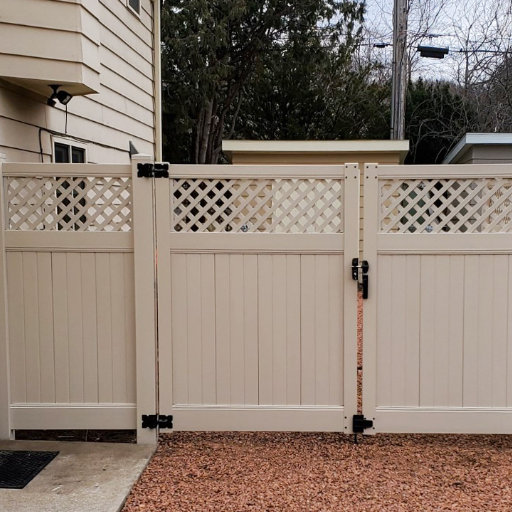
The specialty fences are constructed for particular purposes so that they can be considered beyond mere boundary markings or aesthetic considerations. These purposes might include increased security, privacy, or safety. A few examples are: pool fencing to prevent accidents; pet fencing to protect animals; and high-security fencing for commercial or industrial facilities. These fences are commonly constructed using materials known for their durability, such as steel or chain link. Upon specifications, they can be modified to fit the particular requirements of the property owner. Specialty fences combine functionality and design to solve real problems without compromising on appearance.
Overview of Specialty Fences
Specialty fences are designed to meet specific purposes while retaining their aesthetic appeal. Enhancing security, privacy, and safety, they find their usage in residential, commercial, and industrial establishments. Some commonly encountered instances include pool fences used as barriers to prevent accidental drownings; pet enclosures, which are made secure for animals; and high-security fences intended to protect sensitive areas. Usually, such fences are protected behind steel, chain link, or vinyl walls, which stand up to environmental factors and assure the longest life possible. Resting upon the foundation of functionality, from custom design, specialty fences offer services specifically geared toward the one-of-a-kind needs of property owners.
Examples of Special Fencing Styles
Special and varied fence styles were constructed to cater to the aesthetic and working needs of homes. For instance, lattice fences offer ornate structures that provide a partial barrier, suitable for working in gardens or on patios. Picket fences are enhanced with famous pointed tops for an old-fashioned and time-honored design usually attached to homes. Horizontal slat fences offer a neat and modern design while maintaining privacy and strength. Wrought iron fences, on the other hand, offer a choice for elegance and intricacy while ensuring security and aesthetic charm. These examples show fencing as a way to keep in harmony with practicality and personality.
Advantages of Specialty Fences
Another specialty fence design offers all its benefits, from functionality to aesthetic beauty, enhanced privacy and security, while also defining a boundary backdrop that complements the architecture of a property. Often, they are made for special requirements such as reduction of noise, resistance against wind, or ornamental appeal-a tailor-made solution for either a home or a commercial application. Made with long-life materials and numerous designs to choose from, specialty fencing can add value to a property, require little to no maintenance, and withstand climatic conditions winning proposition.
Installation and Maintenance
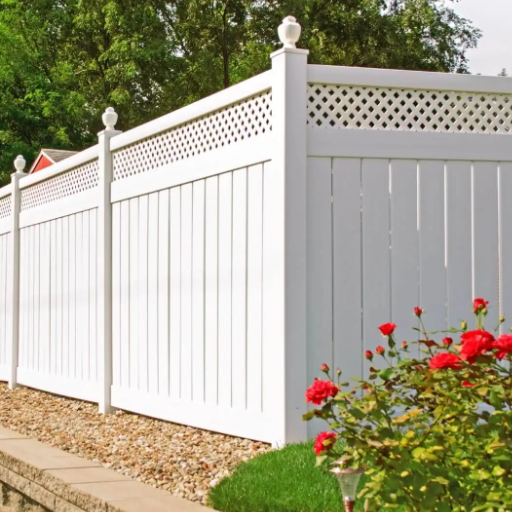
Specialty fences need installation and maintenance that are suited to achieving longevity and success. Installers should be professionals who ensure the fence's stability, right alignment, and adherence to local codes. Maintenance checks include cleaning when necessary to familiarize the structure with dirt or debris. They need to look out for damage and immediately repair anything that can be fixed so as not to worsen the condition. This continuous maintenance will keep the fence operational, good-looking, and tougher. Follow the care instructions given by the manufacturer for the best care of the fence according to the material it is composed of.
General Guidelines for Installing a Fence
Before any fence installation is carried out, one must assess the property lines thoroughly to ensure proper location between neighbors. Check with the local zoning department to make sure you have included all necessary permits. Selecting materials appropriate for their construction is the fine art of good planning: wood for privacy, metal for security. Measure the area accurately to know how much material is required. Posts should be placed at equal depths to maintain consistency throughout the installation, using a level to check for the straightness of the posts. Make sure all components of the fence are fastened firmly, and gates or swinging parts work properly. Attention to all of these details will ensure that the installation is regulation-compliant and that the fence will endure while serving its purpose and appearing beautiful.
Maintenance Tips for the Various Fence Materials
These days, vendors promise fast installations. They expect experienced hands to oversee this work. Proper maintenance of a fence is key to ensuring the longevity of the fencing material in that manner. Wooden fences can show all signs of warping or insect damage; thus, sealants have to be applied yearly for weatherproofing to prevent rot. Metal fences, like aluminum or steel ones, require constant checking for rust, which, if found, is treated and kept at bay with rust inhibitors or the paint is stripped off and reapplied. Vinyl fences need very little maintenance but washing a few times during the year using just mild soap and water should keep it away from stains and dirt. Composite-type of fences require only some cleaning and structural integrity checks from time to time, being made to resist decay and pests. All these maintenance chores, if performed religiously, will help the fence stand for a long time and look good while doing so.
Hiring Professionals for Fence Installation
This article is about fence installation and its professional application. Things are moving on, and yet queries such as "Fence installation near me" or "professional fence contractors" have steadily increased in essence, meaning customers are requiring the services offered by these companies. Professionals know the nitty-gritties of material handling, measurements, and local zoning ordinances, which can often be complex and vary greatly from one location to another. Some insured contractors may offer warranties on their work, leaving the homeowner feeling at ease and providing value to the contractor; they also have access to some specialized tools and installation techniques that, when used properly, provide a quicker installation time and ensure the structural integrity of the fence. This way, by reading local contractor reviews and comparing quotes from licensed contractors, one can reach data-driven conclusions to ensure that these are value-for-money projects.
Frequently Asked Questions (FAQs)
What are the different types of fences available?
There's a wide variety of fences to suit different necessities and tastes. Common types are wood fences, chain link fences, vinyl fences, and metal fences like aluminum and steel. Each kind of fence has its own stand-alone features, advantages, and costs involved in its installation and maintenance. For instance, wood fences provide privacy while imparting a natural look to your backyard; steel fences, on the other hand, might be more secure and durable. The type to be chosen will depend on your particular needs.
Shadowbox fence and feature?
Shadowbox fencing provides a unique solution to the aesthetic requirements of stylish fences. Fence panels are switched from one side of the fence to the other, giving rise to the "shadow" in shadowbox and thus adding a layer of visual interest. Airflow is promoted while still maintaining a small amount of privacy for this option of garden fence or backyard enclosure. Besides, they can be made from different materials such as wood or vinyl, permitting all sorts of aesthetics. When maintained well, a shadowbox fence can stand for many years.
How do I pick the best wood fence for my particular property?
Basic considerations for selecting a type of wood fence include the budget, style, and maintenance. Commonly used wood in fencing is spruce and cedar, each having different advantages. Cedar wood is naturally rot-resistant and, in this manner, guarantees the longevity of the fence. If you are looking for privacy, consider a solid board fence; alternatively, a picket fence will give you that more classic look. Consider also whether you prefer to paint the fence or leave it natural, as this choice influences all other maintenance considerations and aesthetics.
What is the installation process of vinyl fencing?
Installing a vinyl fence involves several key steps to ensure it will stand up over time. Start by planning the layout and getting any permits, if necessary. Mark the positions for the posts; remember that the spacing has to be uniform with the fence design. Set the posts in concrete and then assemble the fence panels, which usually snap or slide into place. One important thing while setting the panels is to ensure they are level and securely fastened. If correctly done, a vinyl fence will bring you privacy and curb appeal for years on end with little maintenance.
Tags: Fences
